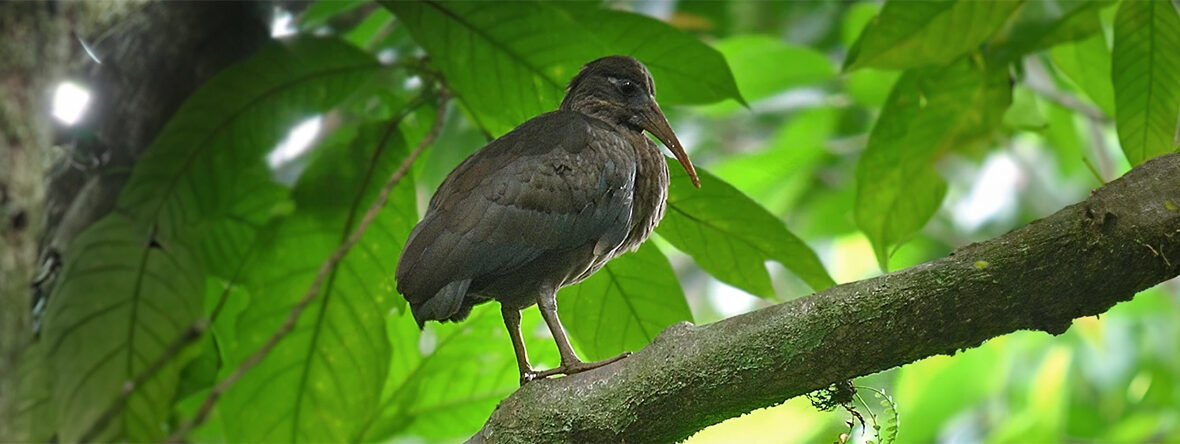
The São Tomé ibis, aka dwarf olive ibis or the dwarf ibis, hails from São Tomé off the western coast of Central Africa in the Gulf of Guinea. The dwarf ibis is 1 of 10 birds on São Tomé that are threatened with extinction. They face the threats of habitat loss and destruction at the hands of logging, agriculture, roads & railroads (which divide their habitat and can result in vehicle strike – being hit by vehicles), and dam construction; hunting; trapping; and invasive species, & with them disease, predation, and competition for food. These birds are listed as Critically Endangered by the IUCN. Their numbers of an estimated 1,700- are also decreasing.
First the Stats…
Scientific name: Bostrychia bocagei
Weight: Up to 1 lb.
Length: Up to 25.60 inches
Wingspan: Up to 9.76 inches
Lifespan: Up to 20+ years
Now on to the Facts!
1.) These birds were first discovered in the 1800s by Francisco Newton, a Portuguese collector.
2.) They build nests high up in the trees (approximately 52+ feet) to avoid predation.
3.) Even though little has been done to protect these and other critters of São Tomé, programs such as the ECOFAC (Ecosystèmes Forestiers d’Afrique Centrale) plan and the establishment of a national park have been instituted to aid in saving the various wildlife.
4.) While mostly silent, these birds can produce sounds. If disturbed, they will produce a coughing grunt. When beginning to roost, they emit a harsh honk sound. Their general call sounds like a stressed “Walalalala”.
5.) Nests are constructed of twigs and other leaf litter, and are lined with feathers. The nest measures up to 14+ inches across.
But wait, there’s more on the São Tomé ibis!
6.) There are 19 other endemic species of birds on São Tomé.
7.) 1 of their threats is that of an anthropogenic nature, in that up to 75% of the native flora of São Tomé has been lost since its colonization back in the 1500s!
Did you know…?
There are only an estimated 249 individuals remaining, to date.
8.) Feral cats, feral dogs, Mona monkeys, black rats, least weasels, and African civets all prey on the São Tomé ibis.
9.) Biodiversity research in all of the Gulf of Guinea has been severely limited in the past due to economic collapse, political instability, and the hyper-focus on agriculture. Conservation of the biodiversity of São Tomé has been proposed for over 100 years, but only recently acted upon in the last 40 years, give or take.
10.) Little is known about their breeding habits. But it is assumed that the female will lay up to 5 eggs that hatch in up to 4 weeks. This is based on other ibis species.
Be sure to share & comment below! Also, check out the Critter Science YouTube channel. Videos added regularly!
Want to suggest a critter for me to write about? Let me know here.
Some source material acquired from: Wikipedia & IUCN
Photo credit: Nic Borrow – Edge of Existence



